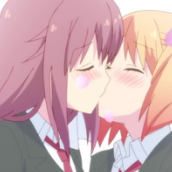History of Halloween
Hello and welcome to a special Halloween Article! Outside of the United States, Halloween is not widely celebrated around the world and I’ve found that people outside the US know little to nothing about what Halloween is and what its origins are.
Halloween had its origins in the festival of Samhain among the Celts of ancient Britain and Ireland. November 1 was considered the end of the summer period, the date on which the herds were returned from pasture and land tenures were renewed. It was also a time when the souls of those who had died were believed to return to visit their homes. People set bonfires on hilltops for relighting their hearth fires for the winter and to frighten away evil spirits, and they sometimes wore masks and other disguises to avoid being recognized by the ghosts thought to be present. It was in these ways that beings such as witches, hobgoblins, fairies, and demons came to be associated with the day. The period was also thought to be favourable for divination on matters such as marriage, health, and death. When the Romans conquered the Celts in the 1st century AD, they added their own festivals of Feralia, commemorating the passing of the dead, and of Pomona, the goddess of the harvest.
In the 7th century AD, Pope Boniface IV established All Saints’ Day, originally on May 13, and in the following century, perhaps in an effort to supplant the pagan holiday with a Christian observance; it was moved to November 1. The evening before All Saints’ Day became a holy, or hallowed, eve and thus Halloween. By the end of the Middle Ages, the secular and the sacred days had merged. The Reformation essentially put an end to the religious holiday among Protestants, although in Britain especially Halloween continued to be celebrated as a secular holiday. Along with other festivities, the celebration of Halloween was largely forbidden among the early American colonists, although in the 1800s there developed festivals that marked the harvest and incorporated elements of Halloween. When large numbers of immigrants, including the Irish, went to the United States beginning in the mid 19th century, they took their Halloween customs with them, and in the 20th century Halloween became one of the principal U.S. holidays, particularly among children.
As a secular holiday, Halloween has come to be associated with a number of activities. One is the practice of pulling usually harmless pranks. Celebrants wear masks and costumes for parties and for trick-or-treating, thought to have derived from the British practice of allowing the poor to beg for food called “soul cakes.” Trick-or-treaters go from house to house with the threat that they will pull a trick if they do not receive a treat, usually candy. Halloween parties often include games such as bobbing for apples, perhaps derived from the Roman celebration of Pomona. Along with skeletons and black cats, the holiday has incorporated scary beings such as ghosts, witches, and vampires into the celebration. Another symbol is the jack-o’-lantern, a hollowed-out pumpkin, originally a turnip, carved into a demonic face and lit with a candle inside.
Halloween has always been a holiday filled with mystery, magic and superstition but I hope that, with this article, you have gained some insight about the history of Halloween.
Once again, I thank you for reading this article and I hope you enjoyed it.
~Ryuji
Here are some wonderful Halloweenish anime screenshots!
~Hyouka
~Re-Kan
~Owari no Seraph (Vampires are often depicted in Halloween movies)





0 Comments
Recommended Comments
There are no comments to display.